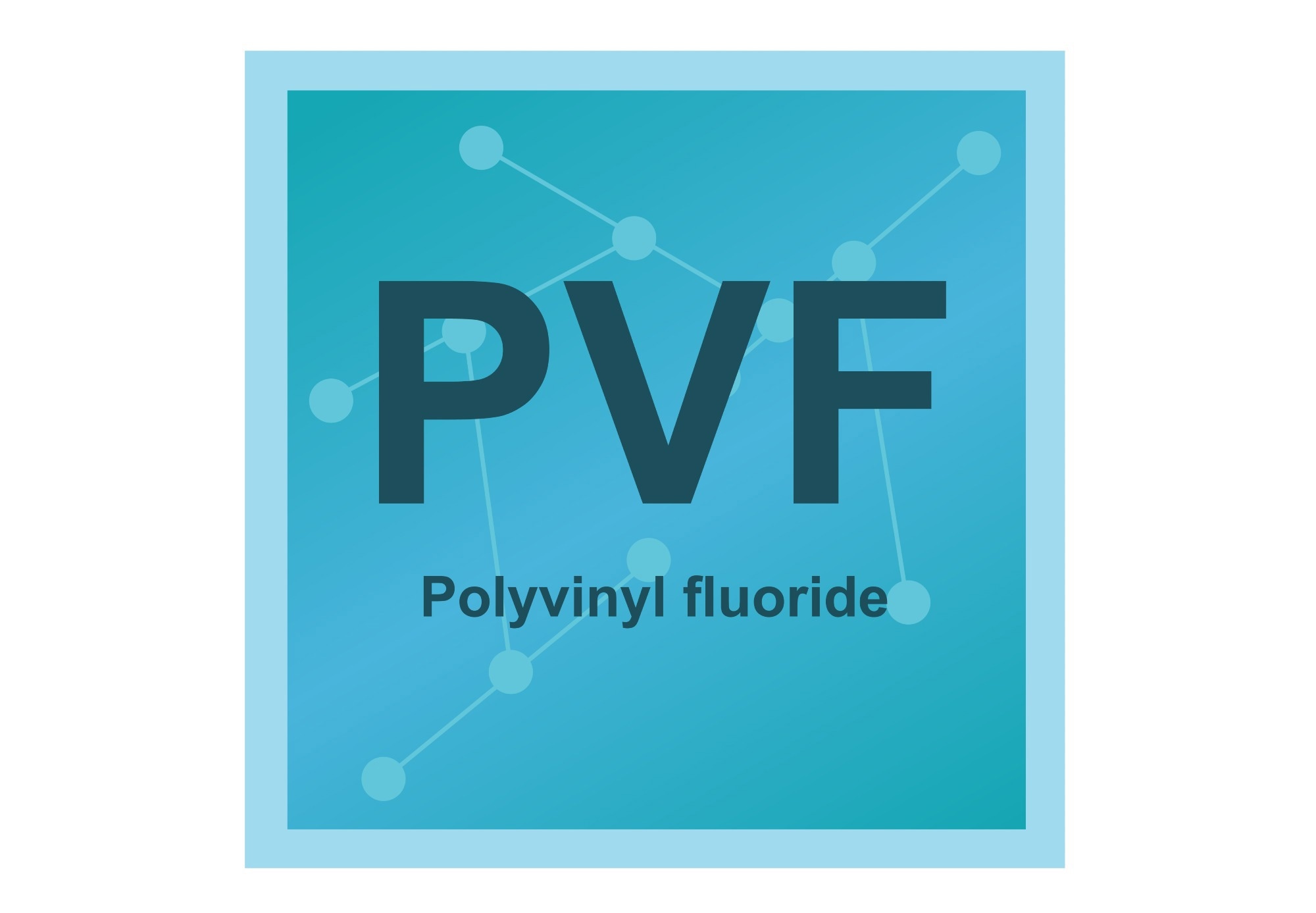Updated by Reginald Davey 23/09/22
Polyvinyl fluoride (PVF) is a colorless, transparent-translucent, and semi-crystalline fluoropolymer possessing superior resistance to chemicals, outstanding weathering resistance, and low gas permeability; it has exceptionally high flexural tolerance and burns extremely slowly.

Image Credit: petrroudny43/Shutterstock.com
PVF is UV transparent. However, it is extremely expensive and unsuitable for injection molding. A thermoplastic fluoropolymer, PVF has the chemical formula (C2H3F)n with repeating fluoride units. This polymeric material is similar in structure to PVC.
Polymer Type
Thermoplastic
Advantages
PVF is extremely impermeable to vapors, and exhibits excellent weathering resistance and resistance to chemical attack. Exceptions to this are ketones and esters, which can cause chemical damage to the material. Furthermore, PVF is an extremely slow-burning material, which makes it ideal for fire-resistant applications.
Disadvantages
Despite the advantages of PVF, there are some critical drawbacks to the material which limits some of its commercial and industrial applicability. This thermoplastic fluoropolymer suffers from issues with thermal stability. As a result, PVF is unsuitable for injection molding, which is a common manufacturing process for thermoplastics. This process is used to manufacture multiple parts for many industries.
Because of this industrial limitation, PVF is usually only available as a film. If thermoplastics are needed for injection molding processes, they must be alternatives such as PVC.
Applications
Several innovative industrial applications for PVF have been developed in recent decades. The material is commercially available as films with various colors and formulations. It is also available as specialty resins for use as coatings for various commercial purposes.
PVF is commonly used for applications that require flammability protection, such as airplane interiors and backsheets in photovoltaic modules. Another common application for PVF is in metal sheeting and raincoats to protect against the elements. It is also used as a surface coating for PVC films.
A recent innovative use for PVF has been in NASA’s Phoenix Mars Lander. It is an ingredient in DuPontTM Tedlar®, a surface protection film. NASA have applied this PVF-containing material in the lander’s biobarrier, which is used as a precaution to ensure that no earth-borne bacteria contaminate the lander’s robotic arm.
The lander uses this robotic arm to dig through top soil layers to retrieve samples of water ice and soil for sophisticated analysis. As one of the aims of current NASA missions is to search for life on the red planet, and determine whether it still exists or did exist at one point in Mars’ past. The superior performance of PVF as a coating and protective film is one of the factors which has helped to determine the success of the mission.
Properties
The properties of PVF have been extensively studied. This material possesses outstanding chemical resistance, mechanical strength, stability, indoor functionality, durability in many environments, stain resistance, endurance at elevated temperatures, and low permeability.
Amongst its typical properties, PVF has a density of 1.45 g/cm3, surface hardness of SD80, tensile strength of 40 MPa, flexural modulus of 1.4 GPa, maximum operating temperature of 150oC, water absorption of 0.05%, 30% strain at yield, a dielectric strength of 20 MV/m, and negligible mold shrinkage and mold temperature range.
The favorable mechanical, thermal, and physiochemical properties of PVF make it an attractive material for a wide range of commercial and industrial applications.
| Property |
Value |
| Density (g/cm3) |
1.45 |
| Surface Hardness |
SD80 |
| Tensile Strength (MPa) |
40 |
| Flexural Modulus (GPa) |
1.4 |
| Notched Izod (kJ/m) |
0.18 |
| Linear Expansion (/°C x 10-5) |
9 |
| Elongation at Break (%) |
150 |
| Strain at Yield (%) |
30 |
| Max. Operating Temp. (°C) |
150 |
| Water Absorption (%) |
0.05 |
| Oxygen Index (%) |
35 |
| Flammability UL94 |
V0 |
| Volume Resistivity (log ohm.cm) |
13 |
| Dielectric Strength (MV/m) |
20 |
| Dissipation Factor 1 kHz |
0.5 |
| Dielectric Constant 1 kHz |
8 |
| HDT @ 0.45 MPa (°C) |
121 |
| HDT @ 1.80 MPa (°C) |
82 |
| Material. Drying hrs @ (°C) |
NA |
| Melting Temp. Range (°C) |
NA |
| Mould Shrinkage (%) |
NA |
| Mould Temp. Range (°C) |
NA |
Source : Abstracted from Plascams
For more information on Plascams please visit RAPRA Technology Ltd.
More from AZoM: Thermoplastics In The Aerospace Industry
Further Reading and More Information
Dupont – Tedlar® [online] dupont.com. Available at:
https://www.dupont.com/brands/tedlar.html
Polymer Database (2022) Poly(vinyl fluoride) (PVF) [online] polymerdatabase.com. Available at:
http://www.polymerdatabase.com/Polymer%20Brands/PVF.html
Disclaimer: The views expressed here are those of the author expressed in their private capacity and do not necessarily represent the views of AZoM.com Limited T/A AZoNetwork the owner and operator of this website. This disclaimer forms part of the Terms and conditions of use of this website.